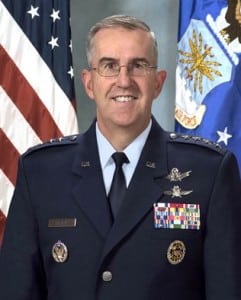
The United States must maintain and modernize all three legs of the nuclear triad, including through deployment of a new air-launched cruise missile, the Air Force general nominated to lead U.S. Strategic Command said on Tuesday. “It’s essential that we always maintain a fully ready nuclear deterrent capability. There should be no doubt that the nation needs that capability as the backstop of everything we do as a military,” Gen. John Hyten, current commander of Air Force Space Command, said…










